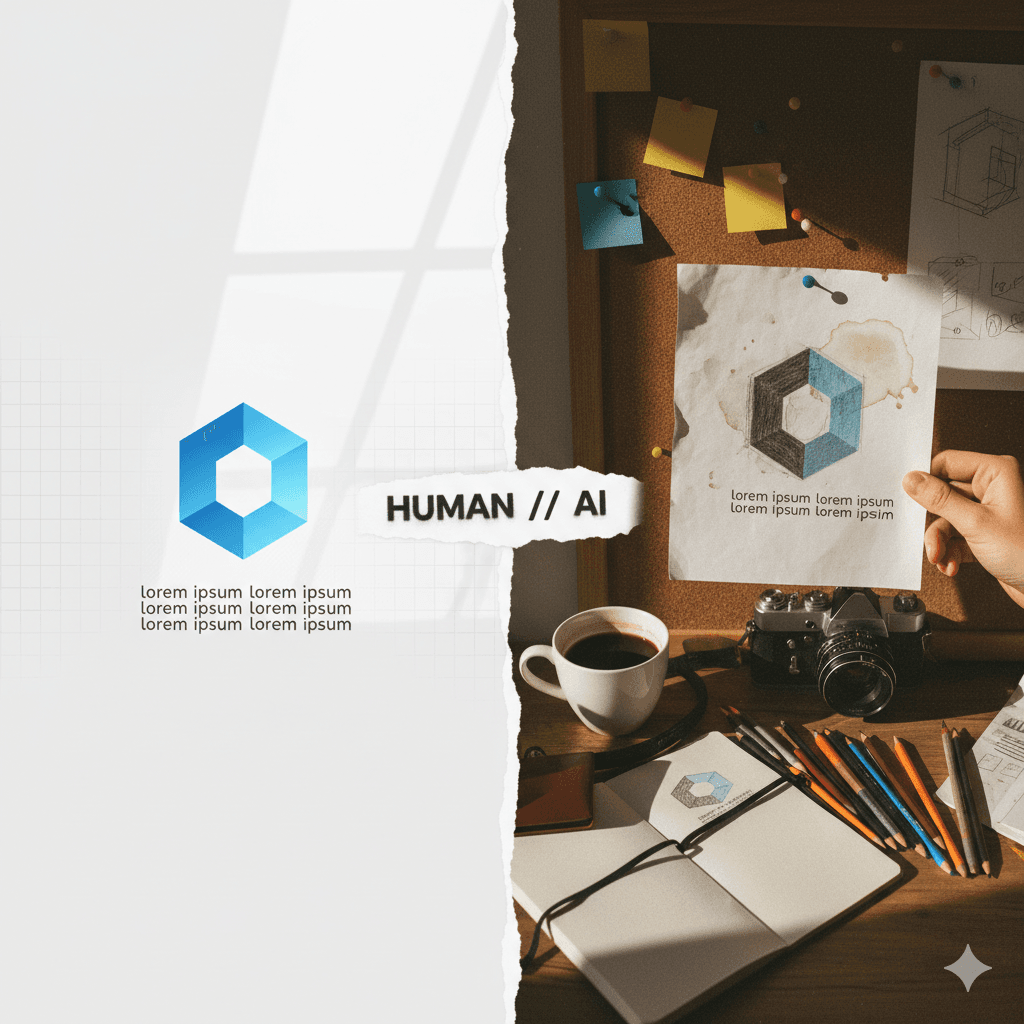Have you noticed that the internet looks a little... too good lately?
Scroll through LinkedIn or Instagram for five minutes. The copy is grammatically flawless. The graphics are mathematically balanced. The lighting in the headshots is celestial.
And yet, you feel absolutely nothing.
We are currently living through the "Uncanny Valley" of content. When everyone has access to tools that can generate "perfect" output in seconds, perfection stops being a differentiator. It becomes the new average.
At 351 Studio, we’ve been obsessing over a counter-intuitive trend. The brands winning in 2025 aren’t the ones with the glossiest finishes. They are the ones embracing texture, friction, and human error.
We call it The Grit Advantage.

The Problem with "Average Perfection"
Let’s be real about the elephant in the room. Artificial Intelligence is incredible. It helps us clear the blank page panic. However, AI models are trained on the aggregate of human data. By definition, they regress to the mean. They give you the statistically most likely answer, the most pleasing color palette, and the safest sentence structure.
The result? A digital sea of "Corporate Memphis." You know the one. It is that flat, inoffensive art style that plagued tech for a decade. Only now, it is in our writing and our strategy too.
The Insight: When you polish a brand until it has no rough edges, you remove the surface area that people can actually grab onto.

Why We Crave "Texture" (The Science of Friction)
Humans are tactile creatures living behind glass screens. We are desperate for texture.
This is why we’re seeing a resurgence in design trends that feel "messy."
- Low-fidelity photography: Photos that look like they were taken on a disposable camera at a party rather than in a studio.
- Brutalist Design: Layouts that break the grid and force the user to pay attention.
- Conversational Copy: Sentences that start with "And" or "But." We see typos left in for effect and voice cracks in podcasts.
This is the digital equivalent of Wabi-Sabi, the Japanese aesthetic view centered on the acceptance of transience and imperfection. In a world generated by algorithms, the only thing that proves you are real is your flaw.

How 351 Studio Approaches "The Mess"
We get asked a lot: "Do you guys use AI?"
The answer is yes, but probably not how you think. We don't use it to paint the final picture. We use it to handle the mundane tasks like file sorting, initial research, or code debugging. This ensures our human brains have the energy left to be weird.
We protect the "mess" of the creative process. When we present branding to a client, we don't just show the polished final logo. We show the scribbles. We show the bad ideas. We show the humanity that went into the decision-making.
Because that story? That’s what sells. Not the hex code.
3 Ways to Inject "Grit" Back Into Your Brand
If you feel like your brand has become a little too sanitized, here is how you can dirty it up strategically to increase engagement.
1. Stop scrubbing your voice
If you use ChatGPT to write your blogs or captions, fine. But you must go back in and break the grammar. Add a personal anecdote that an LLM couldn't possibly know about. Use a metaphor that doesn't quite make sense but feels right. If your CEO creates video content, stop editing out every "um" or awkward pause. Those pauses are where the trust lives.
2. Visuals with friction
Move away from flat vector art and flawless stock photos. Introduce noise textures, grain, and asymmetry. If you are a SaaS company, don't just show a clean screenshot of your dashboard. Show a photo of someone using it on a laptop with stickers on the lid and a coffee cup next to it. Context is texture.
3. Show your work (The "Glass Box" Strategy)
Transparency is the ultimate SEO hack because Google’s EEAT guidelines prioritize real human experience. Don't just post the success story. Post the "We almost lost this client and here is how we fixed it" story. Vulnerability is high-resolution.
The Future Belongs to the Flawed
The algorithms are getting better every day at predicting what comes next. They are great at efficiency.
But humans? We are beautifully unpredictable. We are emotional, erratic, and messy. In the coming years, that "human error" is going to be the most premium luxury item a brand can possess.
Don’t aim for perfect. Aim for real.
Ready to find the soul in your strategy? Let’s make something messy together at 351 Studio.
